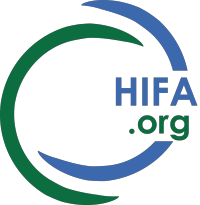Join HIFA for a series of thoughtful discussions on the reproductive health and family planning information and services needs and rights of children and youth. The discussion begins on Monday, July 30, 2018 and will run for four weeks. This discussion is part of the HIFA project on Family Planning, supported by K4Health. Read the blog about our second discussion (March 2018) on empowering health workers for better family planning.
Children and youth are a heterogeneous group. Largely considered a resilient and healthy age cohort, RH/FP programs often overlook the unique development and health needs of young people, particularly in low and middle income countries. Furthermore, risk and protective factors for many health outcomes later, such as substance use and high risk sexual behavior, often begin in adolescence.
In the last of the current series of three discussion forums focused on family planning, we will be talking specifically about the needs and rights of children and youth. We have intentionally kept the age range large in order to discuss the changing needs of children and youth as they transition from early childhood to young adulthood.
The discussion will be held on HIFA’s main discussion forum (with more than 11,000 health workers, program managers, researchers, and policymakers worldwide) and also on CHIFA, HIFA-Portuguese, HIFA-French, and HIFA-Zambia. It will be supported by experts in family planning at the World Health Organization, University of Oxford, Guttmacher Institute, IntraHealth, Johns Hopkins Center for Communication Programs, and USAID.
Become a HIFA member (free) to join the discussion!
Topic: Addressing the reproductive health and family planning (RH/FP) information and service needs and rights of children (0-17) and youth (15-24)
Q1. What types of information and services on RH/FP do children and youth need? How do these information and service needs change over time?
Q2. What are some good examples of information products and programs that are effectively meeting the RH/FP needs of children and youth?
Q3. What are some promising ways to work with influential adults (community members, parent/caregivers, health care providers) to support the RH/FP needs of children and youth?
Q4. How can we best partner with and support the empowerment of young people to advocate for their RH/FP needs?
Note: The proposed themes/questions above are meant only as a guide. We welcome contributions on any of the questions at any point in the discussion. And we welcome any other questions/comments on FP/C that people would like to raise.
Photo credit: Trevor Snapp/IntraHealth International

